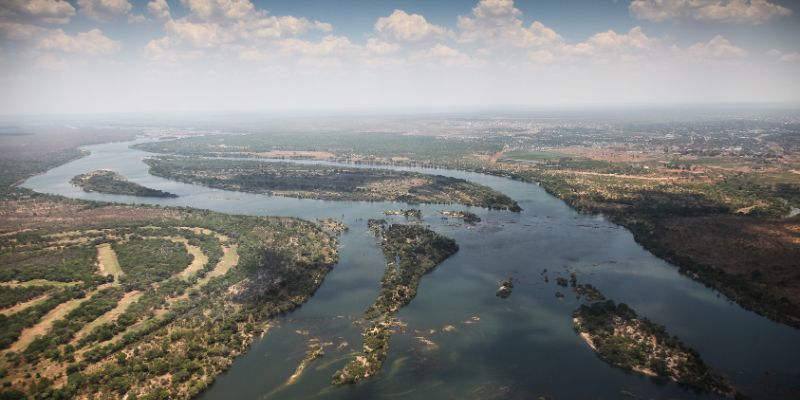
A new model for predicting the effects of climate change on malaria transmission in Africa could lead to more targeted interventions to control the disease according to a new study.
Previous methods have used rainfall totals to indicate the presence of surface water suitable for breeding mosquitoes, but the research led by the University of Leeds used several climatic and hydrological models to include real-world processes of evaporation, infiltration and flow through rivers.
We can use this understanding to direct prioritisation and tailoring of malaria interventions in a more targeted and informed way
This groundbreaking approach has created a more in-depth picture of malaria-friendly conditions on the African continent.
It has also highlighted the role of waterways such as the Zambezi River in the spread of the disease with almost four times the population estimated to live in areas suitable for malaria for up to nine months of the year than was previously thought.
The research entitled “Future malaria environmental suitability in Africa is sensitive to hydrology” was funded by the Natural Environment Research Council and is published today (9 May 2024) in the journal Science.
Dr Mark Smith an Associate Professor in Water Research in the Leeds’ School of Geography and lead author of the study said: “This will give us a more physically realistic estimate of where in Africa is going to become better or worse for malaria.
“And as increasingly detailed estimates of water flows become available, we can use this understanding to direct prioritisation and tailoring of malaria interventions in a more targeted and informed way. This is really useful given the scarce health resources that are often available.”
Malaria is a climate-sensitive vector-borne disease that caused 608,000 deaths among 249 million cases in 2022.
95% of global cases are reported in Africa but reductions in cases there have slowed or even reversed in recent years, attributed in part to a stall in investments in global responses to malaria control.
The researchers predict that the hot and dry conditions brought about by climate change will lead to an overall decrease in areas suitable for malaria transmission from 2025 onwards.
The new hydrology-driven approach also shows that changes in malaria suitability are seen in different places and are more sensitive to future greenhouse gas emissions than previously thought.
For example, projected reductions in malaria suitability across West Africa are more extensive than rainfall-based models suggested, stretching as far east as South Sudan, whereas projected increases in South Africa are now seen to follow watercourses such as the Orange River.
Breeding conditions
Co-author of the study Professor Chris Thomas from the University of Lincoln said: “The key advancement is that these models factor in that not all water stays where it rains, and this means breeding conditions suitable for malaria mosquitoes too can be more widespread – especially along major river floodplains in the arid, savannah regions typical of many regions in Africa.
“What is surprising in the new modelling is the sensitivity of season length to climate change - this can have dramatic effects on the amount of disease transmitted.”
Simon Gosling, Professor of Climate Risks & Environmental Modelling at the University of Nottingham, co-authored the study and helped to coordinate the water modelling experiments used in the research. He said: “Our study highlights the complex way that surface water flows change the risk of malaria transmission across Africa, made possible thanks to a major research programme conducted by the global hydrological modelling community to compile and make available estimates of climate change impacts on water flows across the planet.
“Although an overall reduction in future risk of malaria might sound like good news, it comes at a cost of reduced water availability and a greater risk of another significant disease, dengue.”
The researchers hope that further advances in their modelling will allow for even finer details of waterbody dynamics which could help to inform national malaria control strategies.
Dr Smith added: “We're getting to the point soon where we use globally available data to not only say where the possible habitats are, but also which species of mosquitoes are likely to breed where, and that would allow people to really target their interventions against these insects.”
Further information
This work was undertaken with support from the UK Natural Environment Research Council (NERC) award FLOODMAL (NE/P013481/1) (MWS and CJT), and Leeds-York-Hull NERC Doctoral Training Partnership (NE/S007458/1) (EM). The paper is also based upon work undertaken as part of COST Action PROCLIAS, supported by COST (European Cooperation in Science and Technology), www.cost.eu.